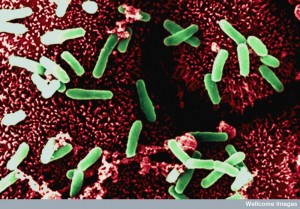A method of profiling bacterial growth time in the gut’s microbiome has been shown to be a rudimentary diagnostic tool for IBS and diabetes type II. A research team came together from the labs of Dr Elinav and Professor Segal to investigate at the Weizmann Institute of Science, Israel.
The millions of bacteria living within our gastrointestinal (GI) tract form a vast interactive community. It functions at as complex a level as any ecosystem might on the macro-scale. For this reason, we refer to such micro-communities as a microbiome; a topic of much interest in recent years with regards to studying various diseases.

Labiotech investigated the growing significance of the microbiome industry earlier this year, in particular in relation to the study of diseases such as Diabetes type II and Irritable bowl syndrome (IBS).
The Weizmann Institute of Science, a public research university in Rehovot, Israel, published a study in Science looking at how the growth time of particular bacterial colonies can in fact uniquely vary if you have a particular disease. So how exactly does one measure how long it takes one bacterium to grow when it’s living in the biggest possible bacterial soup you can imagine?
Well, a multi-disciplinary team was assembled, constituting of students from both Dr. Elinav’s lab in the Department of Immunology and Prf. Eran Segal’s lab in the Computer Science and Applied Mathematics Department. Between them they established that during bacterial replication, there is a higher concentration of ‘Start’ pieces of code compared to terminal (‘End’) pieces of the genome (only appearing once replication has been completed). Over-time the ratio between these two concentrations changed, with the incidence of terminal sequences steadily increasing as more genomes were fully replicated.
Calculating the growth rates for single strains meant the algorithm could then be applied to analyse metagenomic (collected genetic material from a mixed community) data sets. In fact, the team’s method worked so well they realised they were able to make inferences about the prevalence of certain diseases. Specific growth rate ‘profiles’ coincided with the incidence of type II diabetes, and similarly other profiles indicated IBS.

Indeed, Dr. Elinav went as far as to say their method “reveals things about our health that cannot be seen with any other analysis method”, since factors which influence the onset of diseases such as these are complex.
However, it is often difficult to discern whether the impact of gut bacteria in development of glucose intolerance is intrinsic, as suggested in an earlier Segal-Elinav study, or whether it is simply another variable in a cumulative set of triggers.
This method of studying the gut’s microbiome could be a useful a biomarker in more in-depth studies of diseases such as IBS and type II diabetes.





